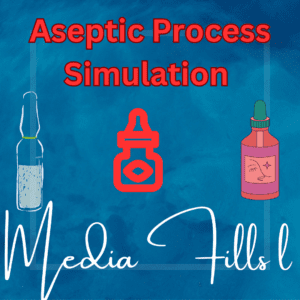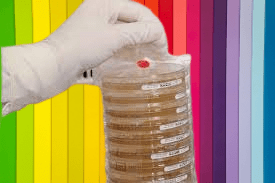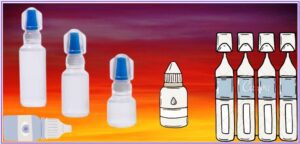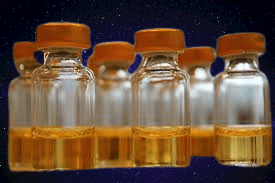The aseptic process simulation (media fill) in the pharmaceutical industry plays an important role to maintain the quality of sterile products ensuring product safety, maintaining sterility, and upholding regulatory compliance. Aseptic process simulation (media fill) serves as a vital tool for validating and optimizing aseptic manufacturing processes. Simulating real-world conditions using a sterile growth medium instead of actual pharmaceutical products provides a controlled environment to assess the effectiveness of aseptic techniques and equipment.
Key Parameters of the aseptic process simulation (Media Fill).
| Parameter | Description |
|---|---|
| Sterile Growth Medium | Utilized instead of actual pharmaceutical products for simulating conditions |
| Aseptic Technique | Practice and evaluation of proper aseptic procedures and behaviors |
| Cleanroom Environment | Replication of controlled cleanroom conditions during the simulation |
| Filling Equipment | Assessment of equipment performance and compatibility with aseptic processes |
| Personnel Behavior | Evaluation of personnel adherence to gowning protocols and cleanroom practices |
| Contamination Detection | Identification and monitoring of potential microbial contamination |
| Control Point Identification | Identification of critical steps and control points in the process |
| Corrective Actions | Implementation of measures to address identified vulnerabilities |
| Regulatory Compliance | Alignment with regulatory standards and requirements |
| Training and Skill Development | Enhancing personnel competency in aseptic practices |
Aseptic process simulation guideline
| Region | Guideline |
| United States | FDA Guidance for Industry: Sterile Drug Products. Produced by Aseptic Processing – Current Good Manufacturing Practice |
| European Union | Annex 1 – Manufacture of Sterile Medicinal Products of the European Pharmacopoeia |
| United Kingdom | MHRA (Medicines and Healthcare Products. Regulatory Agency) – Rules and Guidance for Pharmaceutical Manufacturers and Distributors |
| Canada | Health Canada – Good Manufacturing Practices (GMP) Guidelines for Drugs |
| Australia | TGA (Therapeutic Goods Administration) – PIC/S (Pharmaceutical Inspection Co-operation Scheme) Guide to Good Manufacturing Practice for Medicinal Products |
| Japan | JP (Japanese Pharmacopoeia) General Rules for Aseptic Manufacturing Process (GMP) |
| International | ISO 13408-2:2018 – Aseptic Processing of Health Care Products |
pics aseptic process simulation Guidance
The Pharmaceutical Inspection Co-operation Scheme (PIC/S) provides valuable guidance on aseptic process simulation, a critical aspect of pharmaceutical manufacturing. PIC/S is an international organization that aims to harmonize and promote good manufacturing practices (GMP) in the pharmaceutical industry.
PIC/S emphasizes the importance of aseptic process simulation as a tool for validating and optimizing aseptic practices. Their guidance outlines key principles and considerations to ensure the reliability and effectiveness of simulation exercises.

The PIC/S guidance emphasizes the need to use a growth medium (simulated product) instead of actual pharmaceuticals during aseptic process simulation. This allows for a controlled environment where the behavior of personnel, equipment, and the cleanroom can be evaluated without the risk of contamination to actual products.
Furthermore, PIC/S highlights the significance of replicating real-world conditions during simulation exercises. This includes maintaining appropriate cleanroom conditions, adherence to aseptic techniques, gowning procedures, and critical control point identification. By simulating these conditions accurately, pharmaceutical manufacturers can identify potential risks, optimize processes, and enhance overall product quality and patient safety.
Additionally, the PIC/S guidance emphasizes the importance of conducting thorough documentation and record-keeping during aseptic process simulation. This includes capturing the simulation setup, observations, results, corrective actions, and any deviations encountered. Documentation plays a crucial role in demonstrating compliance with regulatory requirements and providing a comprehensive audit trail.
By adhering to the guidance provided by the PIC/S Pharmaceutical Inspection Co-operation Scheme, pharmaceutical manufacturers can ensure that their aseptic process simulation exercises are robust, reliable, and aligned with international standards. This contributes to the assurance of product sterility, regulatory compliance, and the continuous improvement of aseptic practices within the industry.
When should aseptic process simulation be done?
Aseptic process simulation should be conducted at various stages throughout the lifecycle of a pharmaceutical manufacturing process. Here are some key instances when aseptic process simulation should be performed:

- Validation: Aseptic process simulation is an integral part of the validation process for aseptic manufacturing facilities. It is typically conducted during the qualification of cleanrooms, equipment, and processes to ensure that they meet the required sterility standards.
- Process Changes: Whenever significant changes are made to the aseptic manufacturing process, such as modifications to equipment, facility layout, or critical operating parameters, an aseptic process simulation should be conducted. This helps evaluate the impact of these changes on the overall sterility assurance and identify potential risks or deviations.
- New Product Introductions: When introducing a new product into an aseptic manufacturing facility, it is essential to perform an aseptic process simulation specific to that product. This ensures that the manufacturing process is optimized, validated, and capable of consistently producing sterile products.
- Periodic Monitoring: Regular monitoring and reassessment of aseptic processes are essential to maintain product quality and compliance. Aseptic process simulation can be conducted periodically to evaluate the ongoing performance of the facility, equipment, and personnel in maintaining the desired level of sterility.
- Training and Competency Evaluation: Aseptic process simulation is also used for training purposes, especially for personnel involved in aseptic manufacturing. Simulation exercises allow individuals to practice and demonstrate their proficiency in aseptic techniques, gowning procedures, and cleanroom behaviors.

It is important to note that the specific requirements and frequency of aseptic process simulation may vary based on regulatory guidelines, industry best practices, and individual company policies. Pharmaceutical manufacturers should consult relevant regulatory authorities and follow applicable guidelines to determine the appropriate timing and frequency of aseptic process simulation in their specific context.
Process flow of the aseptic process simulation.
| Step | Description |
|---|---|
| Step 1: Preparation | Gather necessary equipment, including growth medium, sterile containers, and accessories. |
| Step 2: Setup | Prepare the aseptic filling area and cleanroom environment following established protocols. |
| Step 3: Training | Conduct training for personnel involved in the simulation, emphasizing aseptic techniques. |
| Step 4: Media Fill | Introduce the sterile growth medium into the aseptic filling line following proper procedures. |
| Step 5: Filling | Simulate the filling process, ensuring proper equipment operation and aseptic handling. |
| Step 6: Monitoring | Continuously monitor critical parameters, such as temperature, pressure, and time duration. |
| Step 7: Sampling | Collect samples at designated intervals during the simulation for subsequent analysis. |
| Step 8: Evaluation | Analyze the samples for microbial contamination and assess the success of the simulation. |
| Step 9: Documentation | Record all observations, deviations, corrective actions, and results during the simulation. |
| Step 10: Review | Review the simulation results, identify areas for improvement, and implement corrective actions as needed. |
| Step 11: Reporting | Prepare a comprehensive report summarizing the simulation process, results, and findings. |
| Step 12: Validation | Validate the aseptic process simulation results to ensure compliance with regulatory requirements. |
Frequently Asked Questions
What is the purpose of aseptic process simulation in an injectable plant?
Answer: Aseptic process simulation is conducted to validate and optimize the aseptic manufacturing processes, assess the effectiveness of aseptic techniques, and ensure product sterility.
What is the growth medium used in aseptic process simulation?
Answer: Sterile growth medium, typically a simulated product or culture medium, is used in place of actual pharmaceutical products during the simulation.
How is aseptic process simulation different from actual production?
Answer: Aseptic process simulation uses sterile growth medium instead of actual pharmaceuticals to evaluate equipment performance, personnel behavior, and cleanroom conditions without the risk of product contamination.
What are some critical parameters monitored during aseptic process simulation?
Answer: Critical parameters include environmental conditions (temperature, humidity, pressure), time duration, air flow patterns, equipment performance, and personnel behavior.
How often should aseptic process simulation be performed?
Answer: The frequency of aseptic process simulation depends on regulatory requirements, company policies, and risk assessment. It is typically conducted during validation, process changes, new product introductions, and periodic monitoring.
How are personnel trained for aseptic process simulation?
Answer: Personnel undergo training on aseptic techniques, gowning procedures, cleanroom behavior, and specific simulation protocols to ensure compliance and proficiency.
What is the role of cleanroom classification in aseptic process simulation?
Answer: Cleanroom classification determines the required cleanliness level based on the product being manufactured. It ensures that the simulation is performed in an environment suitable for sterile production.
How are critical control points identified in aseptic process simulation
Answer: Critical control points are identified through risk assessment, process mapping, and knowledge of potential contamination risks. They are monitored and evaluated during the simulation.
How are deviations handled during aseptic process simulation?
Answer: Deviations during the simulation are documented, investigated, and addressed according to established procedures. Corrective actions are implemented to mitigate the risks and prevent recurrence.
What are the documentation requirements for aseptic process simulation?
Answer: Comprehensive documentation includes the simulation setup, observations, results, corrective actions, deviations, and any other relevant data to demonstrate compliance and provide an audit trail.
How are samples collected during aseptic process simulation?
Answer: Samples are collected at designated intervals using aseptic techniques. They are taken from critical points in the process and analyzed for microbial contamination.
What analytical methods are used to evaluate simulation samples?
Answer: Common methods include microbiological testing, such as viable count determination, sterility testing, and identification of microbial contaminants.
How is the success of aseptic process simulation determined?
Answer: The success of the simulation is assessed by evaluating the absence of microbial contamination in the samples collected during the process and meeting pre-defined acceptance criteria.
How are simulation results reported?
Answer: Simulation results are documented in a comprehensive report that includes details of the simulation process, observations, results, deviations, corrective actions, and any recommendations for improvement.
What is the purpose of validating aseptic process simulation?
Answer: Validation ensures that the aseptic process simulation is performed correctly and consistently, meeting regulatory requirements and providing assurance of sterility for pharmaceutical manufacturing processes
